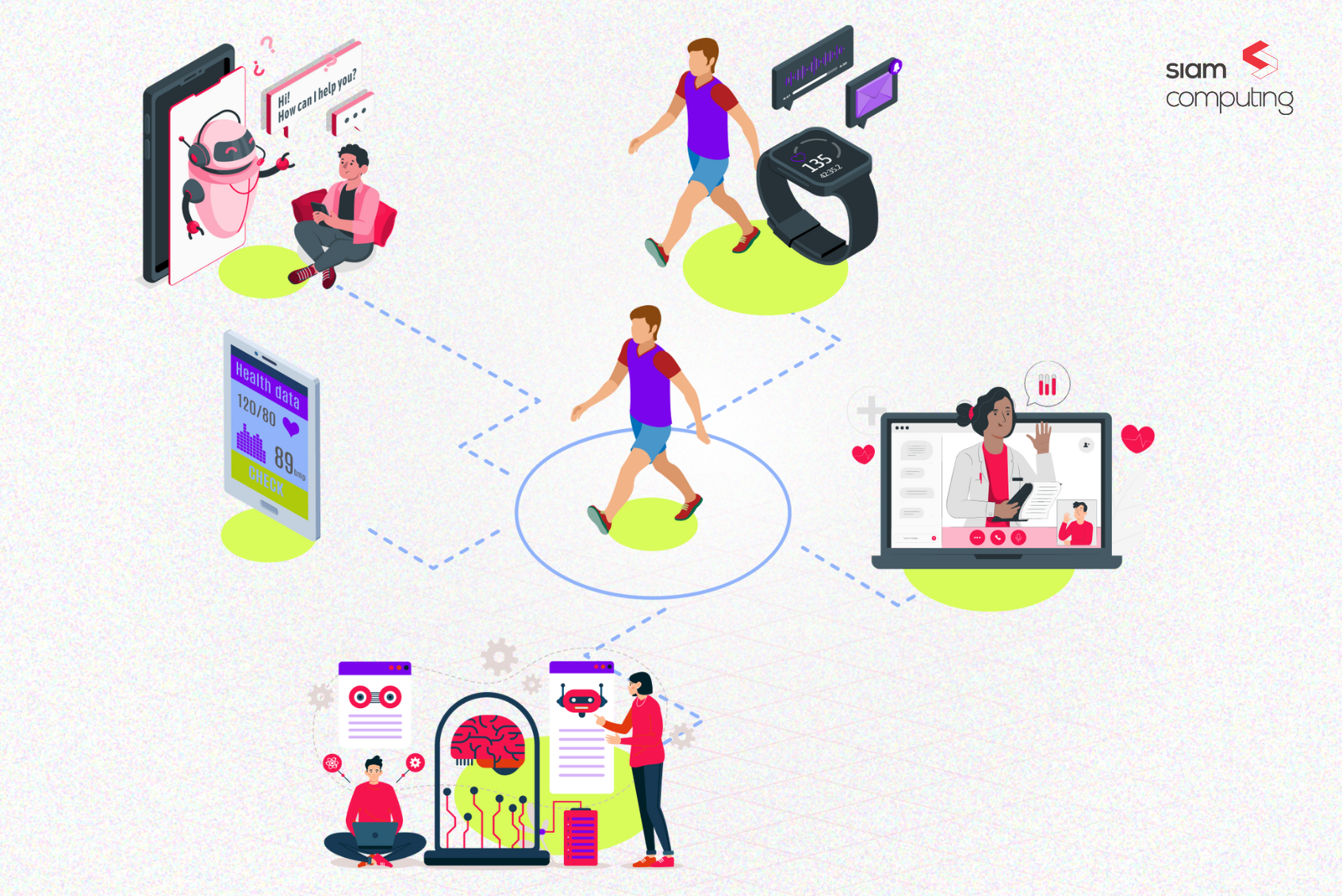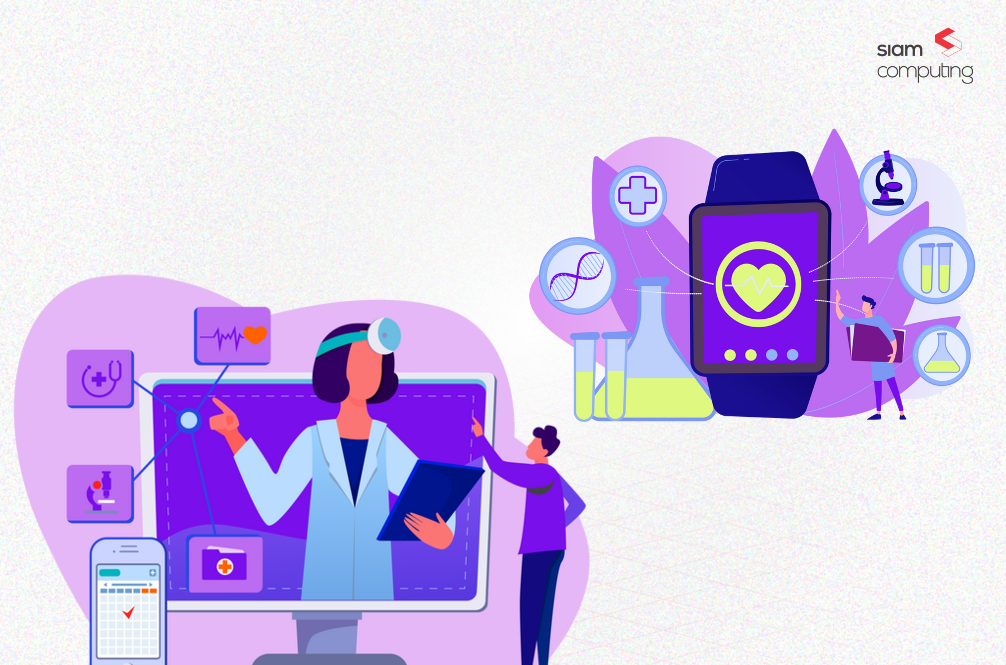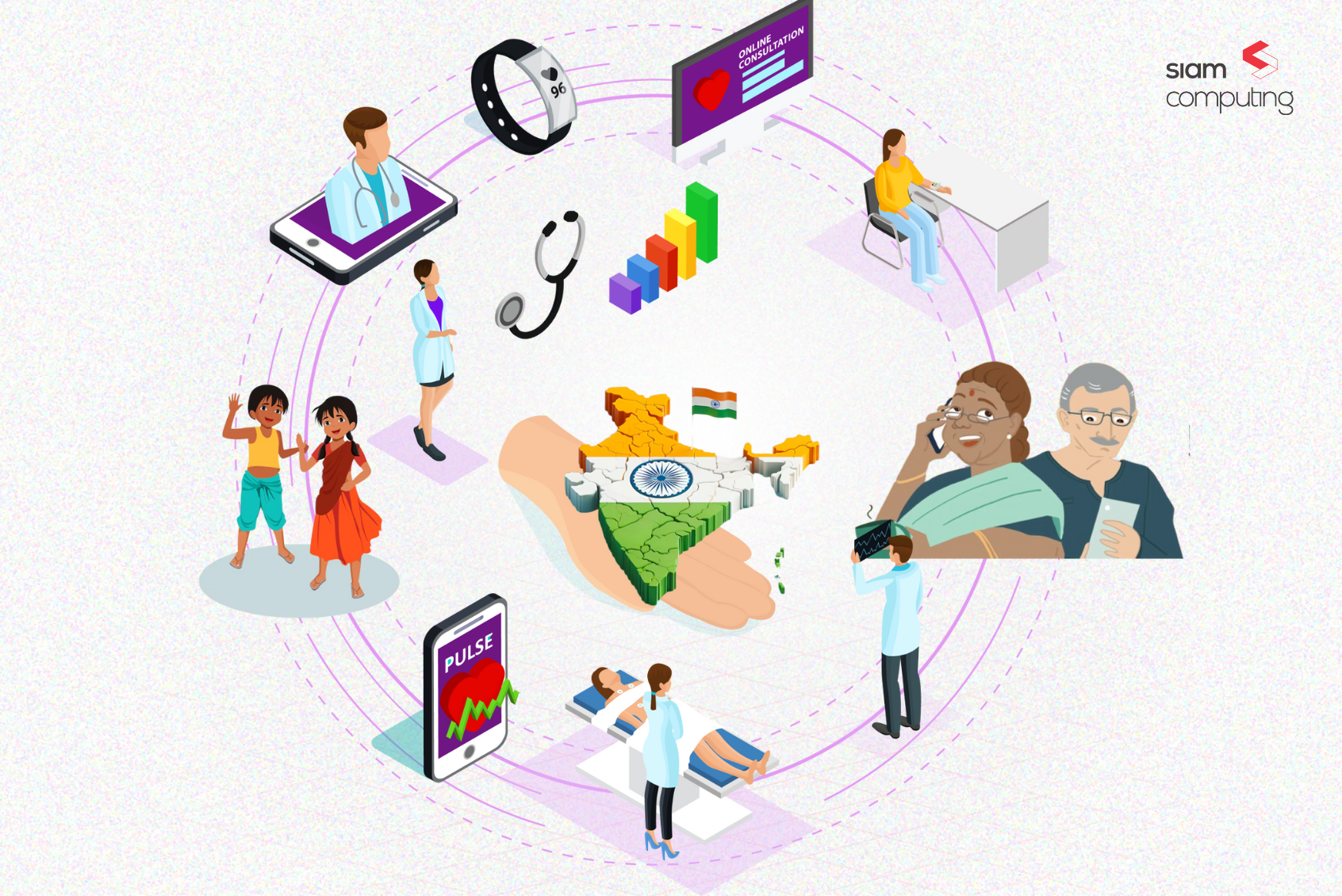Payer portals have evolved beyond simple claims processing platforms. Today, they offer a treasure trove of member data, presenting a unique opportunity for healthcare providers and payers to leverage Artificial Intelligence (AI) and Machine Learning (ML) for a smarter and more engaging member experience.
By integrating AI and ML capabilities, payer portals can be transformed into intelligent hubs that deliver personalized experiences, predict future healthcare needs, and proactively address potential issues.
This comprehensive blog delves into the multifaceted applications of AI and ML within payer portals, exploring their potential to:
- Craft Personalized Member Journeys
- Embrace Predictive Analytics for Proactive Care
- Bolster Fraud Detection and Risk Management
- Enhance Operational Efficiency and Cost Management
- Empower Clinical Decision Support
- Offer Conversational Care with Virtual Health Assistants
Crafting Personalized Member Journeys
The traditional one-size-fits-all approach to member communication is no longer effective. AI and ML can personalize the member experience within the payer portal, leading to increased engagement and improved health outcomes. Here’s how:
- Recommendation Engines: AI algorithms can analyze member data (claims history, demographics, wellness program participation) to recommend personalized health resources, educational materials, and preventive care programs. Imagine a portal suggesting diabetes management resources to a member with a history of pre-diabetic conditions or recommending a flu shot based on seasonal trends and member demographics.
- Targeted Communication: AI can identify communication preferences (email, SMS) and tailor messages based on member needs. For instance, a member with a chronic condition might receive personalized reminders for medication refills or upcoming specialist appointments.
- Dynamic Content and User Interface: Leveraging member behavior data, the portal interface can adapt to individual needs. A member frequently utilizing the cost-estimation tool might see it prominently displayed, while another member primarily focused on wellness programs could have those resources highlighted.
Embrace Predictive Analytics for Proactive Care
Imagine healthcare with a crystal ball! AI can predict potential health issues, allowing for early intervention and improved outcomes. This shift from reactive to proactive care puts your members (patients) in the driver’s seat of your health, empowering them to prevent problems before they arise. Here are some applications:
- Disease Risk Prediction: AI models can analyze historical claims data and identify members at high risk for developing chronic diseases such as heart disease or diabetes. Early detection allows for preventive interventions like targeted wellness programs and lifestyle recommendations.
- Hospital Readmission Risk Stratification: ML algorithms can predict which members are most likely to be readmitted to the hospital after discharge. This allows for targeted post-discharge care plans and support programs, potentially reducing readmission rates and associated costs.
- Identifying High-Cost Members: Predictive analytics can help identify members likely to incur high healthcare costs due to chronic conditions or complex medical needs. Early identification allows for personalized care management programs designed to improve health outcomes and potentially reduce costs.
Bolster Fraud Detection and Risk Management
Fraudulent claims can be a thorn in everyone’s side. AI acts as a watchful guardian, wielding its eagle eyes to detect and prevent these activities. This safeguards healthcare resources for payers and providers, and ensures their allocation towards genuine needs.
- Anomaly Detection: AI algorithms can analyze claims data and identify unusual patterns that might indicate fraudulent activity. For instance, a sudden spike in claims from a specific provider or for atypical procedures could trigger further investigation.
- Real-Time Fraud Detection: ML models can analyze member behavior in real-time to detect suspicious activity. This might include unusual login attempts, attempts to access unauthorized information, or submission of implausible claims.
- Risk Scoring: AI can assign risk scores to members based on their claims history and other data points. This allows for more targeted interventions and resource allocation for fraud prevention.
Empower Clinical Decision Support
Imagine a world where AI becomes a trusted sidekick for healthcare providers. Real-time risk assessments and evidence-based recommendations, curated by AI, empower them to chart the best course of treatment for every member. This translates to more informed decisions and improved health outcomes for you. Here’s how:
- Real-Time Risk Stratification: AI algorithms can analyze a member’s medical history, current medications, and claims data in real-time to provide healthcare providers with a dynamic risk assessment. This empowers them to make more informed decisions about treatment plans, potential drug interactions, and potential complications.
- Evidence-Based Treatment Recommendations: Leveraging vast medical literature databases, AI can suggest evidence-based treatment options tailored to a member’s specific condition and medical history. This can be particularly valuable for complex cases or when dealing with rare diseases.
- Patient Education Materials: AI can personalize patient education materials based on the member’s diagnosis and treatment plan. This ensures patients receive clear and relevant information that empowers them to actively participate in their own care.
Conversational Care with Chatbots and NLP Virtual Health Assistants
AI-powered chatbots and virtual assistants powered by Natural Language Processing (NLP) can revolutionize member communication within the portal. This means, no more members waiting on hold. Chatbots powered by AI’s conversational magic offer several advantages:
- 24/7 Availability: Chatbots can answer member questions and address basic concerns around the clock, even outside of business hours. This enhances member experience by providing immediate access to information and support.
- Personalized Interactions: By leveraging member data and past interactions, chatbots can personalize responses and offer targeted guidance. Imagine a scenario where a member asks about a specific medication. The chatbot can access their profile, identify potential interactions with existing medications, and provide relevant information or direct them to a qualified healthcare professional for further guidance.
- Reduced Cost and Improved Efficiency: Chatbots can handle routine inquiries, freeing up call center staff to focus on complex member issues. This can significantly reduce operational costs and improve overall efficiency.
Enhance Operational Efficiency and Cost Management
AI automates tedious tasks, predicts potential IT glitches, and frees up valuable staff time for more complex issues. This translates to a smoother member experience and a more efficient use of healthcare resources. Here’s how:
- Chatbots and Virtual Assistants: AI-powered chatbots can answer basic member questions, schedule appointments, and provide basic guidance, freeing up human agents for more complex inquiries.
- Automated Claim Processing: ML algorithms can automate routine claim processing tasks, reducing manual effort and processing time.
- Predictive Maintenance: AI can analyze system usage data to predict potential equipment failures within the portal, allowing for proactive maintenance and preventing downtime.
Building a Successful AI & ML Strategy for Payer Portals
Integrating AI and ML successfully into payer portals requires a strategic approach. Here are some key considerations:
- Data Quality and Security: The success of AI and ML models hinges on high-quality data. A robust data management strategy ensuring data accuracy, completeness, and security is paramount.
- Regulatory Compliance: Healthcare data is subject to strict regulations like HIPAA. Payers must ensure their AI and ML models comply with all relevant data privacy and security regulations.
- Explainability and Transparency: As AI models become more complex, ensuring explainability and transparency in their decision-making processes is crucial. This allows for building trust with members and regulatory bodies, and facilitates addressing potential biases within the models.
- Change Management and User Adoption: Integrating AI and ML significantly impacts member and staff experiences. A comprehensive change management strategy is essential to ensure user adoption and address potential concerns. Training for staff and clear communication to members regarding the benefits and limitations of AI in the portal are crucial.
Emerging Applications: A Glimpse into the Future
AI and ML hold immense potential for further revolutionizing payer portals. Here are some exciting possibilities:
- AI-powered Claims Processing: Automating routine claims processing tasks using AI can significantly improve efficiency and reduce administrative costs. Natural Language Processing (NLP) can be used to extract relevant information from medical records, streamlining the claims adjudication process.
- Personalized Billing and Payment Options: AI can analyze member data to predict payment behavior and suggest customized payment plans, improving member satisfaction and reducing collection costs.
- AI-driven Population Health Management: Leverage AI to identify at-risk populations within a member base and develop targeted interventions for disease prevention and management. This can lead to improved health outcomes and lower overall healthcare costs.
- Biometric Authentication and Security: Integrate AI-powered facial recognition or voice recognition for secure member login and enhanced data security within the payer portal.
Challenges and Considerations
While AI and ML offer a plethora of benefits, there are challenges to consider:
- Data Security and Privacy: Ensure robust data security measures are in place to protect sensitive member health information. Implementing strong data governance practices and adhering to HIPAA regulations are crucial.
- Algorithmic Bias: AI models can perpetuate biases present in the data they are trained on. Careful selection and regular monitoring of training datasets are essential to mitigate bias and ensure fair and equitable outcomes.
- Explainability and Transparency: It’s important to understand how AI models arrive at their recommendations. Explainable AI techniques can help healthcare professionals and members trust and understand the rationale behind AI-driven insights.
The Future of Payer Portals: Powered by AI and ML
By harnessing the power of AI and ML, payer portals can evolve from passive platforms to intelligent hubs that deliver a personalized member experience, proactively manage health risks, and streamline operations. This transformation can lead to improved member satisfaction, better health outcomes, and cost savings for payers.
Siam Computing: Your Partner in Building Intelligent Payer Portals
At Siam Computing, we understand the transformative potential of AI and ML in healthcare. Our team of experts can help you develop and implement a comprehensive AI and ML strategy for your payer portal. We specialize in:
- Data Integration and Management: Ensuring seamless data integration from various sources and implementing robust data governance practices.
- AI and ML Model Development: Developing custom AI and ML models tailored to your specific needs, such as personalized recommendations, predictive analytics, and fraud detection.
- User Interface and User Experience (UI/UX) Design: Creating user-friendly interfaces that seamlessly integrate AI functionalities and empower a smooth member experience.
- Change Management and Training: Developing a comprehensive change management strategy to ensure user adoption and address potential concerns regarding AI implementation.
Contact us today to discuss how Siam Computing can help you unlock the power of AI and ML in your payer portal, and transform it into an intelligent hub that empowers a healthier future for your members.








